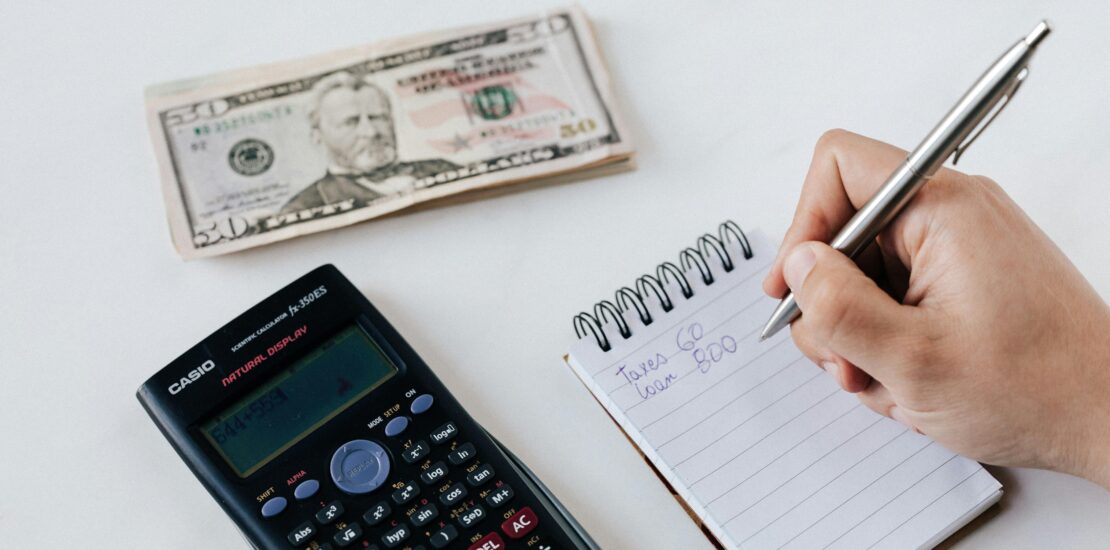Want some practical and effective money-saving tips for living in Japan? Dive in!

Living in Japan has been a lesson in balancing budgets and exploring creative ways to save. From the convenience stores brimming with tempting snacks to the small indulgences that make daily life more enjoyable, I’ve discovered that every yen saved counts. Japan is a country where everything feels designed to draw you in and keep you spending, but there are a few hacks I’ve picked up along the way that have made all the difference.
Compute and Track Monthly Bills
One of the first things I did after settling in Japan was to create a budget. My husband and I have a system that works well for us: he covers the larger expenses like rent and utilities, while I manage savings and food. Having this split allows us both to stay organized without putting too much pressure on one person to handle everything. I use a dedicated logbook to track monthly expenses by category: rent, utilities, food, transportation, and personal spending. Each month, I take the time to tally up our expenses and see if we’re meeting our savings goals.
This logbook has become more than just a budgeting tool; it’s almost like a financial diary. Each entry reminds me of where our money goes, and tracking it visually has made budgeting feel less stressful and more intentional. For anyone new to Japan, setting up a clear budget plan with a logbook can make all the difference—it gives you a sense of control and helps you avoid surprises.
Separate Accounts for Spending and Saving

One of my best budgeting decisions was to set up separate accounts for spending and saving. I use my Resona debit card for everyday expenses and track my spending through the Resona banking app. Each month, I transfer only my set budget to the Resona account, which helps me stay on track. If I ever go over my monthly limit, the app lets me see how much extra I’ve spent, making it easier to adjust for the following month.
My husband also gives me an additional 20,000 to 40,000 yen for “rainy days,” which has become a small buffer that I really appreciate. My JP Bank account, meanwhile, is reserved exclusively for savings—out of sight and out of reach, which helps prevent impulse spending. For anyone who finds it challenging to resist spending their savings, I highly recommend this strategy. It creates a clear boundary between what’s available to spend and what’s meant for the future.
The Envelope Saving Method (With a Twist)
Inspired by a friend, I started using the envelope method to manage specific expenses like groceries, travel, and dining out. Each envelope has a set amount of cash for the month, and once it’s gone, that’s it. I find this method surprisingly effective for sticking to my budget. Physically seeing how much money is left in each envelope keeps me accountable and helps curb impulsive buys. It’s a bit old-fashioned, but there’s something satisfying about this tangible budgeting method.
My “twist” is that I use different colors for each envelope, which helps me visually organize my spending categories. It’s almost like a game—can I make it to the end of the month with something left in each envelope? This strategy has been a fun way to manage money without feeling restricted, and it makes budgeting a bit more engaging.
Coin Savings with a Piggy Bank

My husband and I have a small piggy bank where we deposit our spare change at the end of each day. It might seem trivial, but those 10-yen and 50-yen coins add up faster than you’d expect. I remember the first time we decided to empty the piggy bank, and to our surprise, we had enough for a nice dinner! This small ritual has turned into something meaningful for us—a reminder that even the smallest amounts can turn into something special over time.
We’ve kept up this habit, and every few months, we empty the piggy bank for something enjoyable or even for unexpected expenses. It’s become a fun way to save without really thinking about it, and it always feels like a mini windfall when we count up those coins.
Secondhand Finds for Furniture and Clothes

Japan has some of the best secondhand stores I’ve ever seen. Hard Off and 2nd Street are my go-to places for affordable furniture, clothing, and household items. Recently, I found a beautiful, almost-new kotatsu (a heated table) that has made winter so much more comfortable. The price was a fraction of what it would have cost new, and it’s an item that’s both functional and meaningful.
Shopping secondhand has not only saved me a lot of money, but it’s also led to unique finds that I wouldn’t have discovered otherwise. I’ve found everything from vintage dresses to practical home items, each with its own charm. For anyone moving to Japan, I highly recommend checking out these stores—what you find might surprise you!
Buying in Bulk—Japanese Saving Style
While space in Japanese homes can be limited, I’ve found it worthwhile to buy certain essentials in bulk, especially from discount stores like Gyomu Super. Rice, noodles, and tea are my go-to items for bulk purchases. It not only reduces monthly grocery costs but also saves me from frequent trips to the store.
Japanese supermarkets sometimes sell smaller packages due to space constraints, but with a bit of planning, buying in bulk is totally feasible. I keep my bulk items organized in storage boxes, and it’s always comforting to know I have a backup supply. For those on a budget, buying staples in larger quantities is a smart way to cut down on grocery costs.
Cashback and Points Apps
Japan’s point and cashback systems are extensive, and apps like Rakuten Pay and PayPay offer convenient ways to earn rewards on everyday purchases. My favorite is Rakuten because it covers everything from groceries to online shopping. The points accumulate gradually, and when I redeem them, it feels like a mini bonus.
Using these apps is almost like a game—earning points just for doing what I’d normally do. It’s a simple but effective way to save a little extra, and those points can make a noticeable difference over time. I highly recommend trying them out for regular purchases, as it feels like you’re being rewarded for your loyalty.
Cooking and Meal Prep

Japan’s convenience stores are tempting with their variety of ready-to-eat meals, but cooking at home has been a huge money-saver for me. I plan my meals based on supermarket sales and prepare bento boxes for myself. I’ve found that shopping in the evening often means discounts on fresh items, like fish and vegetables. It’s satisfying to create meals with quality ingredients while saving money.
Meal prep has not only helped my budget, but it’s also a relaxing ritual. I love creating bento boxes that are both healthy and budget-friendly. For those looking to save, cooking at home is one of the best choices you can make, and it also gives you a taste of local ingredients and flavors.
Seasonal Sales and Timing Big Purchases
Japan has major sales twice a year, in January and July, and I make sure to plan my bigger purchases around these times. I’ve found great deals on everything from clothing to home appliances. Waiting for these seasonal sales has become almost like a tradition, and the savings are well worth it.
Not only does planning purchases around sales save money, but it also gives me time to think about what I really need. By the time the sale arrives, I know exactly what I’m looking for, and I can get it at a reduced price. It’s a smart way to shop and a great strategy for anyone trying to stick to a budget.
If you regularly send money to a foreign account at home to have separate savings in different currencies. check out this article!
Keeping a Miscellaneous and Emergency Fund
With unexpected expenses like health issues or time off work, I’ve learned the importance of having a miscellaneous or emergency fund. I tend to get sick these days, so knowing I have a bit extra set aside is a huge relief. This fund has become my safety net, covering medical costs or even a small getaway when I need a break. It takes a lot of the stress out of budgeting, knowing there’s a bit extra set aside for whatever life throws my way.
Living in Japan has taught me to be resourceful and creative with my budget and saving. Each of these small changes has allowed me to enjoy life here without compromising my savings. It’s a journey, but each little hack brings me closer to financial security and peace of mind.
Stay tuned for more exciting content like this! Follow us on our social media platforms and check out our blog regularly to stay updated on the latest news, trends, and insider stories from Japan. Don’t miss out on future updates—sign up for our newsletter for exclusive content delivered straight to your inbox!
Related Articles
Warning: Undefined array key "sfsi_threadsIcon_order" in /home/veremosglobal/tokyoroomfinder.com/public_html/blog/wp-content/plugins/ultimate-social-media-icons/libs/controllers/sfsi_frontpopUp.php on line 165
Warning: Undefined array key "sfsi_blueskyIcon_order" in /home/veremosglobal/tokyoroomfinder.com/public_html/blog/wp-content/plugins/ultimate-social-media-icons/libs/controllers/sfsi_frontpopUp.php on line 170
Warning: Undefined array key "sfsi_bluesky_display" in /home/veremosglobal/tokyoroomfinder.com/public_html/blog/wp-content/plugins/ultimate-social-media-icons/libs/controllers/sfsi_frontpopUp.php on line 266



